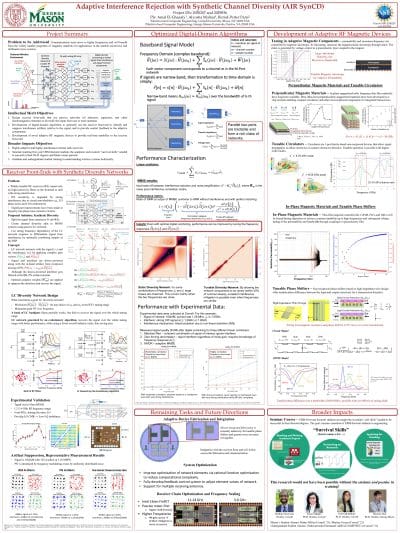Authors
Amal El-Ghazaly, Alyosha Molnar, Bernd-Perter Paris
Abstract
Dynamic spectrum access relies fundamentally on the ability to tune radio transceivers to frequencies that are deemed to be available. Consequently, radio hardware must support tuning over a wide range of frequencies. For the receiver, this precludes the use of fixed frontend filters to reject out-of- band interfering signals. Instead, widely tunable receivers rely on filtering after down-conversion either at IF or baseband. This approach relies on linearity and an ideal mixer to keep the desired signal and interfering signals separated. However, practical receivers exhibit non-linearity, phase noise, and oscillator spurs that cause mixing of the signal of interest and interfering signals. As a result, portions of the interfering signals may appear in the band of the desired signal; this causes interference that cannot be mitigated by filtering. Synthetic diversity mitigates this problem by combining analog and digital processing techniques. In the analog domain, the wide-band RF signal is passed through a tunable, passive, (ideally) lossless multi-port diversity network. Each output from this network is then down-converted and digitized so that multiple versions of the signal are available at digital baseband. As the desired signal and the interfering signals experience different frequency response as they pass through the diversity network, it is possible to employ linear combining in digital baseband processing to mitigate the interfering signals while preserving the desired signal. Rejection performance can be increased even further when the circuit elements in the diversity network can be adapted.

